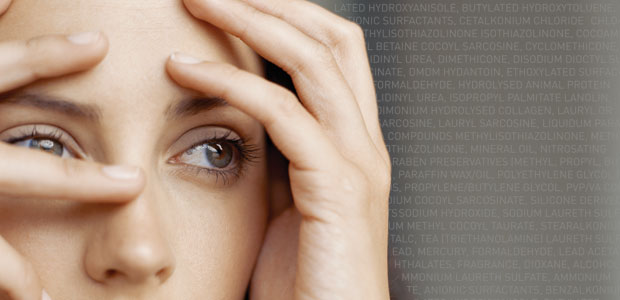
Did you know that the cosmetics you use could also be putting your health at risk? Unfortunately, many toxic chemicals can be found in beauty products.
They add a healthy hue to your cheeks, a sun-kissed streak to your hair, a fresh scent to your body, and a shimmer to your lips. But the cosmetics you use could also be putting your health at risk.
“There can be many toxic ingredients in personal care products,” says Stacy Malkan, spokesperson for the Campaign for Safe Cosmetics (a coalition of public health, labour, environmental health, and consumer-rights groups whose goal is to eliminate the use of toxic chemicals in the health and beauty industry).
“We know that about one-third of cosmetic products contain at least one chemical linked to cancer, and about 60 percent have chemicals that are reproductive toxins,” says Malkan, who is also author of Not Just a Pretty Face: The Ugly Side of the Beauty Industry (New Society, 2007).
These statistics are troubling, especially when you consider that the average adult Canadian uses seven different cosmetics products each day, ranging from cleansing products, makeup and perfumes, to deodorants, toothpaste, and soap.
Beauty Risk
The problem, says Malkan, is a lack of consumer safety standards.
“There are very few regulations,” she explains. “Companies don’t have to safety test products. This is the same in the US and Canada. It’s legal to use even known toxic chemicals. So, we find lead, mercury, formaldehyde, lead acetate, coal tar–highly toxic ingredients–are sometimes used or found in cosmetics.”
Phthalates, a synthetic chemical linked to birth defects, is another toxin sometimes found in cosmetics, often added to fix the fragrance. A report in 2002 by the Campaign for Safe Cosmetics found phthalates in nearly three-quarters of the 72 name-brand beauty products they tested, though this chemical was not listed on the labels.
“Consumers increasingly understand that even low levels of chemicals are problematic and dangerous,” Malkan says. But many cosmetics companies refuse to change their ways. “The companies are sticking to the same old story that a little bit of poison is okay.”
Fragrance Fiasco
“Fragrance is a huge loophole in labelling laws,” says Malkan. “Companies don’t have to tell us what’s in it. If a product says fragrance, then you can imagine dozens or sometimes hundreds of chemicals that aren’t on the label, which makes the label of limited use.”
Staying Safe (and Beautiful)
It’s easy to feel overwhelmed when we think of the number of cosmetic products we use in a day that may expose us to harmful chemicals. But keeping safe isn’t as tough as it seems. The Campaign for Safe Cosmetics is a great place to start. Their website (safecosmetics.org) has links to a database of 25,000 products where you can check how safe your favourite cosmetics are. They’ve also started the Compact for Safe Cosmetics, a pledge companies can sign that serves as a promise that they will keep their products free of toxic chemicals.
Also, check out Health Canada’s Cosmetic Ingredient Hotlist (hc-sc.gc.ca) for the names of restricted and prohibited ingredients.
“We want people to feel empowered and not afraid by this information,” Malkan says. “We can’t keep doing business as usual. We can’t just shop our way out of this problem.”
Simple Steps to Reduce Your Exposure to Toxins
- use fewer products that contain synthetic chemicals
- avoid heavily scented products
- read the labels (but be cautious of chemicals that may not be listed)
- focus on finding safe high-exposure products such as body lotion, face creme, and deodorant
- check the Campaign for Safe Cosmetics website (safecosmetics.org) to see if your favourite products are good choices



































